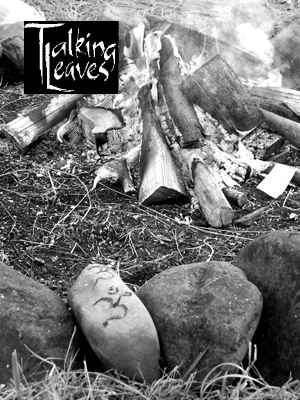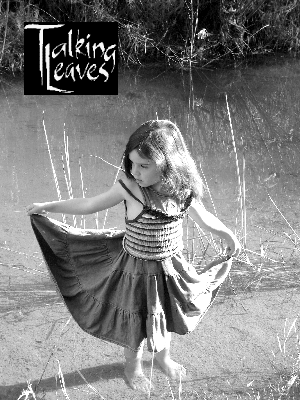Everyone agreed that I was an unlikely candidate for the disease. There was no family history of breast cancer, and I had eaten carefully and exercised vigorously all my life, had two pregnancies and had breast-fed my children. Cancer was an unbelievable and unwelcome surprise.
The Snows of Kilimanjaro
2005 Fall | Nancy Roth
zoo eagle
2005 Fall | Adelia Kehoe
Her keepers are thoughtful: nutritious food, medicine, shelter, instructional arena flights.
She is safe from poachers, electric wires, hunger, territorial squabbles.
Her life should be long and comfortable.
But sometimes in her dreams
she tastes clouds on her wingtips,
fishes from a tree beside a wild river.
In the hollow shafts of her feathers,
ancient memories and instincts slumber.
Her cells remember carving a path against wild currents of wind
with strength of muscle, finesse of feathers,
the sensing and yielding to sensuous currents, like a lover carried into new delights.
Deep Ecology, Permaculture, and Peace: v15 n02 Talking Leaves Magazine Fall 2005
2005 Fall
Volume 15, Numbers 2 & 3
Deep Ecology, Permaculture, and Peace
CONTENTS
- front cover photo: "Solstice Fire" by Dianne Brause
- "Talking Leaves Sheds Its Skin Once Again" by Chris Roth
- "about this issue: War, Peace, Ecology, Permaculture..." by Chris Roth
- Lost Valley Educational Center Programs 2005
- "Asking Deeper Questions: An Interview with John Seed" by Chris Roth
- Earth, Spirit, Action Exercise 1: "The Truth Mandala" by Joanna Macy and Molly Brown
- Earth, Spirit, Action Exercise 2: "The Cosmic Walk" by Mary Coehlo, Sister Miriam Therese McGillis, Thomas Berry, Brian Swimme, Ruth Rosenhek, Elisabet Sahtouris, John Fowler, and Lynn Margulis
- Earth, Spirit, Action Exercise 3: "Earth Anatomy for Gaeans" by Richard W. Ely
- Earth, Spirit, Action Exercise 4: "The Earth as a Peppercorn" by Guy Ottewell
- "Geology and Some Kind of Reverence Along the Upper Iowa River" by Hannah McCargar
- "Reflections on the Frontlines with America's Last Wild Bison" by Ramon Sanchez
- Pushing Through the Dream by Aidan Plank
- "The Snows of Kilimanjaro" by the Rev. Nancy Roth
- zoo eagle by Adelia Kehoe
- Raven Song by Shawn Klemmer
- "peace in my life" by kaseja Wilder
- By and Bye by Richard Bredsteen
- Bear Song by Shawn Klemmer
- A Mind Field and Waiting for Tea... by Richard Bredsteen
- La Tourelle by Tammy Davis
- "Misinfo-War and Waging Peace through Deep Democracy" by Greg Michael
- "Peace and Permaculture: An Interview with Dave Jacke" by Chris Roth
- "The Worst Musician Since Nero?"--music by PDQ Bach, the Joel Rafael Band, the Mammals, Eliza Gilkyson, Girlyman, reviewed by Chris Roth
- "Talking Back: letters from readers"
- back cover photo: "Lost Valley Oak" by Dianne Brause
Family Values: For the Birds
2005 Spring | Chris Roth
An Interview with Dave Bontrager by Chris Roth
Dave Bontrager is an ornithologist and ecologist who has educated and inspired many fledgling (and no-longer-fledgling) birders and nature-lovers for the past three decades. Twelve years ago, he and his wife Charlotte moved from southern California, where Dave had been stationed at Starr Ranch Audubon Sanctuary, to a forty-acre site just three miles up Lost Creek from us. Since their move, he has continued teaching classes at Starr Ranch, commuting south for multiple-week courses. For the past three years, he has also offered regular bird identification and natural history classes to local Dexter and Eugene-area residents. I've enrolled in every one, for good reason: Dave's knowledge, insight, and enthusiasm for his subject have enriched my life and greatly accelerated my own learning about birds and natural history.
The Homing Instinct
2005 Spring | Mark Batcheler
And nature has provided us with a blueprint and the stories to find ourselves back home. All you need is a pair of wings and an unbroken connection to your ancestral knowledge. The intrepid wheatear is a fine example. This sparrow-sized bird, whose family heirloom consists of more than a genetically imprinted map of where home is, possesses homing instincts complete with a readiness equal to that of a great athlete and explorer combined. As the eastern Canadian population of wheatears heads off on their migration, they follow their internal map towards open water for a trans-Atlantic crossing to England and then on to home to Northern Africa.
